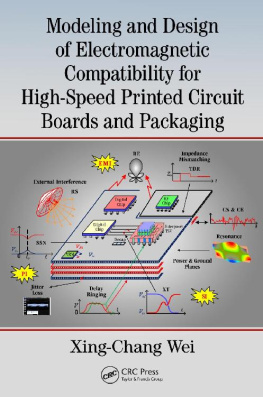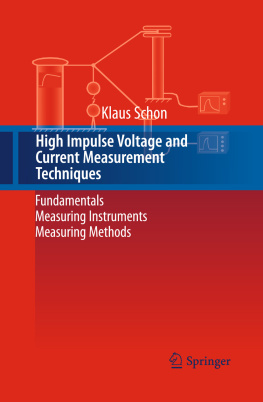ISBN 9783110723090
e-ISBN (PDF) 9783110723144
e-ISBN (EPUB) 9783110723199
Bibliographic information published by the Deutsche Nationalbibliothek
The Deutsche Nationalbibliothek lists this publication in the Deutsche Nationalbibliografie; detailed bibliographic data are available on the Internet at http://dnb.dnb.de.
2021 Walter de Gruyter GmbH, Berlin/Boston
Everybody understands everything
The first part of this monograph Protecting Electrical Equipment. Good Practices for Preventing High-Altitude Electromagnetic Pulse Impacts (a much longer volume than this one) was published in May 2019. The practical focus of that book differentiated it from all other books on the same subject available on the market. Instead of discussing general HEMP threats to the national infrastructure and pen-picturing the disasters and destructions usually dominating the books on this subject, see .

Figure 1.1 Several books (out of dozens on the book market) in various different languages colorfully describe in detail the possible disasters, destruction, and economic damage that will befall the country after a HEMP attack, as well as the bureaucratic games of civil and military officials responsible for protecting infrastructure against HEMP.

Figure 1.2 Some scientific reports from the leading research centers on the topic of HEMP.
Unfortunately, the scientific reports, see , from the leading research centers (such as Idaho National Laboratories, Oak Ridge National Laboratories, Lawrence Livermore National Laboratory, NERC, etc.) have not deviated very far from these books in the sense that they also do not contain real practical developments and recommendations sufficient for the practical implementation of infrastructure protection.
The monograph Protecting Electrical Equipment presents practical recommendations on protecting certain types of electrical equipment against HEMP. I thought that such clear and practical recommendations unavailable before were exactly what everybodyboth HEMP experts and power systems staffneeded. Thus, I enthusiastically sent out information about the book to all world-leading experts on HEMP. As a result, nearly a hundred experts have bought the book. Naturally, I should be delighted with such popularity and their interest in my work among experts.
However, something prevents me from feeling delighted. To be more specific, there was an absolute indifference and lack of interest shown in the proposed practical protection means. This was strange because some of the topics covered in the book were controversial, and my conclusions and recommendations did not coincide with generally accepted views. e.g.:
grounding does not protect electrical equipment against HEMP;
cable shields should be grounded using additional capacitance and inductance;
the construction of the protective devices and elements usually selected for the protection of electronics against the E1 component of HEMP are not reasonable or correct;
special HEMP filters advertised as the basic means for the protection of the equipment against HEMP, are not suitable;
the methods and test results with digital protective relays published in the technical literature prove the tests inadequacy.
Such conclusions should have caused wariness, hard questions, disputes, disagreement, if not a total denial. I expected at least some reaction to the measures and remedies proposed and to the controversial conclusions contrary to existing practice, but I did not receive any critical comment! Not a single comment! Isnt this strange?
However, my communication with the representative of one of the American companies receiving public contracts for research in the HEMP-protection field was even stranger. While that representative raised the question of the great importance and relevance of the protection from HEMP of power transformers of power systems, and of the necessity of extensive and serious research and adequate funding, he asked me to confirm that. However, as soon as I told him that I have a simple and reliable solution, the representative lost any interest in further discussion and did not even ask me what kind of solution I propose.
Thus, the practical solution to the problem was not interesting at all. So, on the one hand, the number of organizations dealing with this problem and receiving money from budgets increases greatly (especially in the USA), while, on the other hand, no organization shows a spark of interest in practical solutions. Rather, the opposite is true: Everyone wants to preserve the status quo as long as possible, that is, to have no concrete, simple, and affordable practical solutions.
They have commercialized this issue, and now it represents a well-functioning business. Dozens of professional consultants who frighten people with HEMP consequences have appeared there during the last 1020 years. Dozens of books and hundreds of reports have been published on this topic, and dozens of private and state-owned organizations have received orders to conduct research in this field. The following is a non-exhaustive list of them (for the USA only!):
Metatech Corp.
Department of Homeland Security (DHS)
EMP Commission of Congress
North American Electric Reliability Corp. (NERC)
Department of Energy
Department of Defense (DoD)
Critical Infrastructure Partnership Advisory Council (CIPAC)
Electric Infrastructure Security Council (EICS)
Defense Science Board (DSB)
US Strategic Command (USSTRATCOM)
Defense Threat Reduction Agency (DTRA)
Defense Logistics Agency (DLA)
Air Force Weapons Laboratory
FBI
Sandia National Laboratories
Lawrence Livermore National Laboratory (LINL)
Oak Ridge National Laboratory
Idaho National Laboratories
Los Alamos National Laboratories
Martin Marietta Energy Systems, Inc.
National Security Telecommunications Advisory Committee
Federal Emergency Management Agency (FEMA)
National Academy of Science
Task Force on National and Homeland Security
House Armed Services Committee (HASC)
EMPrimus
SARA Inc.
Neighborhood of Alternative Homes (NOAH)
EMPact America
Federal Energy Regulatory Commission (FERC)
Electric Power Research Institute (EPRI)
NASA
U.S. Northern Command (NORTHCOM)
SHIELD Act
EMP Grid Services
EMP Technology Holding
Field Management Services
Strategic National Risk Assessment (SNRA)
Walpole Fire Department
Act for America
DipiPlex
CASI
EMP Engineering
Roxtec International
Hardened Structures
Small Business Innovation Research (SBIR)
Secure the Grid Coalition
JINSAs Gemunder Center EMP Task Force













